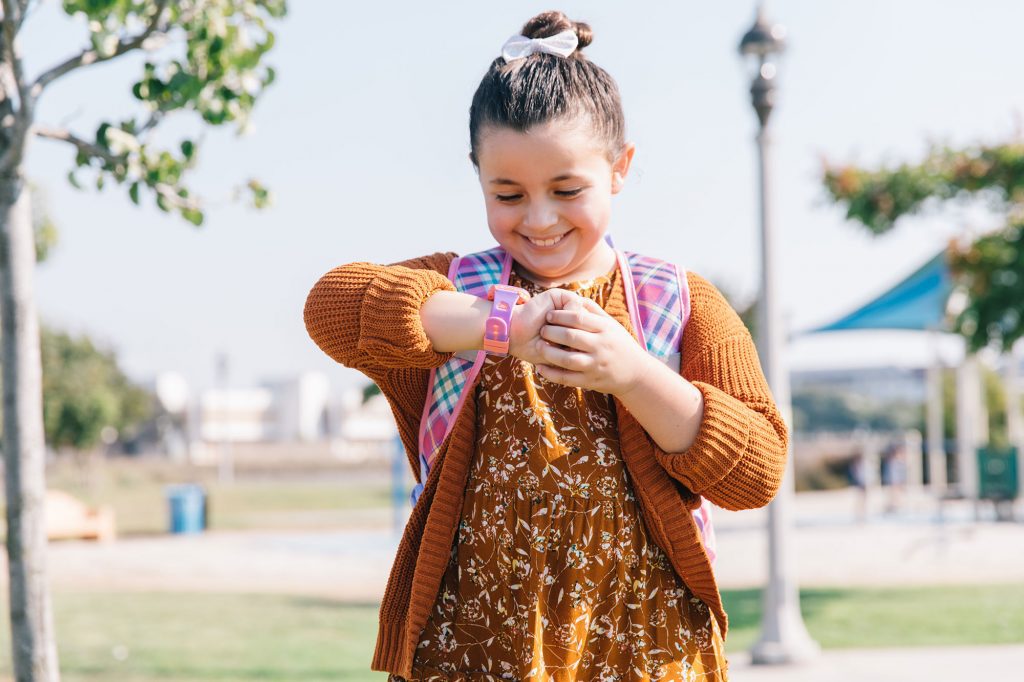12 Web Safety tips every parent should know
We live in a more connected world than ever before. It’s incredible to imagine that just two decades ago Google had only just started and Facebook and YouTube were still just concepts and the smartphones we now take for granted didn’t even exist.
Technology has offered us some amazing advancements and miracles. However, there is a rising awareness of the implications. Consider the statistics below:
- 53% of kids in the US today have a smartphone by the age of 11 (Common Sense Media)
- Kids between the ages of 5-8 spend over 3 hrs/day on a screen (Common Sense Media)
- 82% of parents say they are concerned about their kids’ screen time (Parents Together Action)
- Reports of child online exploitation have risen dramatically since the start of the coronavirus pandemic (WSJ)
- Numerous recent studies suggest strong correlation between social media usage, screen time, and increased risk of depression in adolescents (ABC News)
This is only the beginning, as a growing amount of information is surfacing, alarming parents, educators, health experts and campaigners alike. Technology may be a great force for empowering, connecting and educating people, but it can also have powerfully negative implications.
Parents are wrestling with the reality of our digital age and how to raise children responsibly in a world inundated with screens now more than ever. What should today’s parents know about internet safety? What are the greatest strategies for assisting families in developing appropriate internet habits? We’ve collected a collection of the most critical online safety guidelines and suggestions for families.
Set limits for computer usage
Setting “computer time” limitations can be a challenge for any parent who has been down this road before. Having a regular period when your children can use the computer for both personal and educational purposes will help you establish consistency while also allowing you to set limits. It’s also crucial to link screen time limits to other objectives so that children learn what’s most important and to show flexibility when those priorities shift. If your child is accessing high-quality information and learning materials on the computer, it may be reasonable to extend their computer time. Additionally, setting limits for internet may differ depending on the child’s age and computer competence. These methods can teach children to view screens as tools and that time spent with them is earned via maturity.
Keep computers in the home within common areas
When it comes to developing healthy web habits, location counts. In a common room, place computers used by youngsters in a conspicuous location. This fosters a sense of responsibility among parents and makes it simpler for them to stay involved. Experts are increasingly advising against putting a computer in your child’s room. Unsupervised screen time at a young age can lead to a variety of problems, including greater exposure to sexual content and the possibility of misuse. If you do allow them to use a computer in their room, get them a laptop so they can easily switch locations and spend a limited amount of time alone. Whatever you do, seek for ways to approach computers with “training wheels” so that children can learn in stages.

Invest in online parental controls
When you think about it, we have safe wheels for almost everything: vehicle safety seats, bike training wheels, and young driver’s education. However, with the internet and technology, this is not always the case. For their children’s safety, parents must have some control over internet use in the home and exert it when necessary. This is an important component of guiding and training your children on what digital safety entails. Any household should consider tools that allow parents to block certain websites, filter information, and monitor their children’s online activity. Learn about the parental control options available and how to use them successfully by speaking with your internet provider.
Improve your internet and computer literacy
When it comes to learning about technology and the internet, adults are at a disadvantage compared to children (what does this button even DO? What happened to that file?) Today’s children and teenagers are digital natives as they were born in a millennium when computers always existed. It may seem contradictory to parents who wish to limit their children’s internet exposure, but staying informed is an important part of helping children develop safe digital habits. While you don’t have to be a tech guru, you should try to stay up with your child’s growing tech expertise by learning more about the internet and other platforms such as TikTok, Discord, Instagram, and other social media. There are plenty of internet tools to get you started – don’t forget to talk to other parents about their successes and struggles. The more you know, the better you’ll be able to guide your children online.
Go online with your children
Browsing the web as a family is important for both educational and entertaining purpose. Because screens have become ever-present in our lives, it’s more vital than ever for parents to set a good example for their children when it comes to screen and digital activity. Parents who spend conscious time on the internet with their children make it easy to both teach and monitor, allowing the entire family to gain confidence. When you show interest and participate in your children’s online activities, they will approach you with problems that need to be solved, making online activity an opportunity for interaction rather than isolation. Consider allocating time to help with homework online as a method of bonding with your child while also assuring their safety online.

Educate your child about online dangers
Cyberspace has never been more dangerous. More than ever, parents recognise that some online time is necessary for learning and even social growth. Children must also be aware of the risks they may face online, as well as the steps they can take to avoid becoming a victim. Take the time to talk to your children about internet hazards and acceptable habits. The most important thing is to have an ongoing talk with your children about safety and how to be sensible online.
Parents should think about how to give their children a safe way to access the internet. Using family safety tools like parental controls or introducing technology in small steps like kids smart watches can be a terrific approach to make internet education safe and gradual.

Encourage responsible chat room participation
Today’s internet is a social environment. As children spend more time online, they are more likely to come across an online chat room or interact with others through messaging apps. These days, there are a plethora of chat rooms and apps aimed specifically at children. While the programmes or platforms themselves may not pose a concern, who your child interacts with on them does. >Strangers contacting youngsters with external links to Zoom or Google Hangouts, for example, surged as more kids transitioned to online learning last year. Children must understand that strangers lurk on these forums, no matter how kind they appear on the surface. Ask them if they’ve been approached by anyone online on a regular basis, and consider using web traffic monitors or parental settings to restrict particular sites.
Prohibit giving out personal information online
One of the joys of childhood is the ability to trust freely. However, it increases the risk of online engagement. Children may not comprehend the dangers of disclosing personal information to strangers over the internet. Make it clear to your child that giving out personal information online, such as their home address, school location, or phone number, is not permitted and potentially dangerous. Most importantly, encourage them to speak with you if they have any doubts about something.
Don’t share photos online
Sharing images and videos with friends has become commonplace in the age of social media. However, it’s critical to set clear expectations for your child when it comes to sharing photos online. While messaging trusted pals is OK, consider establishing explicit rules for social media posts and ensuring that their privacy settings are set to non-public. Above all, make sure your children understand that sharing images with strangers is risky.
Parents (and grandparents) should think about the consequences of publishing images of their children online. Again, privacy settings can be crucial in this situation. Whether you’re concerned about internet predators or the digital footprint you leave for your children that will follow them for the rest of their lives, consider how and if you share images of your children.
Invest in online parental controls
When you think about it, we have safe onramps for almost everything: vehicle safety seats, bike training wheels, and young driver’s education. However, with the internet and technology, this is not always the case. For their children’s safety, parents must have some control over internet use in the home and exert it when necessary. This is an important component of guiding and training your children on what digital safety entails. Any household should consider tools that allow parents to block certain websites, filter information, and monitor their children’s online activity. Learn about the parental control options available and how to use them successfully by speaking with your internet provider.
Monitor social media pages
For the younger generations, digital social engagement is becoming more real than face-to-face interaction. Facebook, Instagram, Snapchat, and TikTok, among other social media sites, have become venues for everything – both good and evil. What we do know is that cyber predators are increasingly using social media to pursue minors. The good news is that several of them have begun to implement more powerful parental controls and privacy settings, which will help keep children secure (although too slowly). Discuss the dangers of social media with your child and give them advice on how to be safe. Consider installing an application that gives you information on their internet actions if you want more control over their social media use.
Teach children to identify cyberbullying
As more children transfer their social interactions online, cases of cyberbullying are on the rise around the world. When children may connect remotely or even anonymously online, the risk of abuse, harassment, and bullying increases. And the data clearly reveals that unpleasant interactions like these have long-term effects for children’s anxiety levels and overall mental health. Parents may help by first interacting with children to explain what internet bullying is and why it is not acceptable. When kids know what to look for, it’s easier for them to talk to their parents if they come across it. As public awareness has expanded, parents have had more opportunities to report and stop any malicious activities their children may be exposed to.
Online child safety is a collaborative effort between parents and children, with the best techniques involving consistent messages and regulations, open communication, and active participation. Families who actively engage in the “need to” and “how to” of online safety will be better equipped to experience the joys that our digital world has to offer while also providing parents with the peace of mind they require.

![[AD] We’re a cricket-mad family, so we’re buzzing that @thehundred is back this August! 🏏🔥
To get ready, M tried out the official FREE Activity Pack — and it’s brilliant! 🙌
Packed with fun games, creative challenges and sporty tasks, it’s perfect for getting kids hyped whether you’re at home or on the go.
👉Download yours now (link in bio)
@londonspirit @ovalinvincibles #EveryMomentCounts #TheHundred
#EnglandCricket #CricketFamily #TheHundredCricket #LondonBloggers #Cricket #CricketIsLife #kidsfun](https://suburban-mum.com/wp-content/uploads/2022/11/505472555_18531279601016840_7092520074819907569_n-180x320.jpg)



![[AD - Press visit]
We enjoyed the glorious sunshine this weekend with a trip to Brighton. We went on the @brightoni360official which is right by the sea front.
The i360 pod take a slow journey up, allowing you to take in views across Brighton and the South Downs 450ft above ground. There’s a bar inside with drinks and snacks available to purchase and the experience lasts 25 minutes.
Afterwards, we headed to the open air roller rink for a roller skating session!
The roller rink is:
⭐ Suitable for over 5s
⭐ £6.50 if you have your own skates or £9.50 if you need to hire them
⭐ 45 minutes per session
Full details to visit the i360 + skating
📍 Brighton i360, Lower Kings Road, Brighton BN1 2LN
🚗 Parking nearby (we parked in the Regency Square Car park)
🎟️ Prices start from £25.40 for an adult and £16.90 for a child
🕐 Opening hours are currently Sun-Fri 10.30am-18.30pm and until 19.30pm on Saturdays
☕️ Bar inside the i360, cafe and gift shop
Book tickets here:
https://tickets.brightoni360.co.uk/tickets/?_ga=2.195305772.1869001490.1689671753-1757164059.1689671753/#events?eventid=157](https://suburban-mum.com/wp-content/uploads/2015/04/417980235_313576471048632_3682382982231216432_n.jpg)

![[AD] ***Summer of fun at Barracudas Activity Camps!****
There is plenty for kids to do at @barracudas_activity_day_camps
From Tennis, Archery, Swimming, Motor Sports and more you can be sure that there will be something for kids aged 4.5-14. ⚽🏈🥅🎾🏓🏎️🏹🏊♂️🏉
You can book on a day by day basis - so it can fit in with any other days out/activities you have planned and there are early drop off and late pickup options available. Barracudas are also Ofsted registered so you can use your Childcare Vouchers too.
⭐⭐⭐Get £20 off a week or £4 off a day using my discount code: MARIA20⭐⭐⭐
#BarracudasActivityDayCamp #BarracudasActivityCamp #BarracudaAmbassadors #SummerHolidays #SchoolHolidays #Summer2023 #SummerCamp #DayCare #Camp #KidsCamp #surreymummy #surreymums #SummerOfFun #ActivityCamps #HolidayCamps #Childcare #SchoolHolidays #schoolholidaycamps](https://suburban-mum.com/wp-content/uploads/2024/07/353583570_625625966167953_545896259645102575_n.jpg)



![[AD] We have some super exciting news...we have been chosen to be Laser Quest Ambassadors, and the boys are over the moon!
We are really lucky that our local Laser Quest (@laserquestkingston) is just around the corner from us. It means we can pop in of a weekend or anytime during the school holidays, and with summer just around the corner, I know Laser Quest will be one of our go-to places for some family fun.
As well as games of Laser Quest, there are also VR experiences and arcade amusements too. To find out a bit more about how Laser Quest works, you can read my blog post: https://www.suburban-mum.com/laser-quest-kingston/ (clickable link in bio)
Don't forget to keep an eye out for our Laser Quest posts - I'm going to be giving away two family passes to use at Laserquest Kingston!
If you can't wait and want to head down to Laser Quest to try it out, use the code SUMMER30 for 30% off your booking. The code is valid from now until the end of August 2023 and can be used on Laser Quest games and birthday party bookings.
#LaserquestAmbassador #Laserquest #LaserquestKingston #ActivitiesForKids #FamilyFun #DaysOutWithKids #Lasertag #LaserquestVR #Kingston #ThingsToDoInKingston #SurreyFamilyDaysOut #ThingsToDoWithKids #RainyDayFun #SurreyMummy #SurreyLife #LifeWithKids #LifeWithBoys #familyfunday](https://suburban-mum.com/wp-content/uploads/2015/04/353230107_797358078406942_2405522556733455165_n.jpg)

![[AD] The sun has finally made an appearance and the boys have been making the most of it by spending it
in the garden.
They’re go-to is always football and they’ve been trying to improve their aim and accuracy with the new Messi Foldable Footlball goal from the #MessiTrainingSystem range.
I love the fact the goal is foldable, making it easy to store away when not in use. It is also lightweight so you can effortlessly pack it up and take it to the park or to a friend’s house.
The Messi Foldable Football Goal retails at £36 and can be purchased from @argos
You can read my full review here: https://www.suburban-mum.com/messi-foldable-football-goal/
#TrainLikeMessi #FoldableFootballGoal #FootballSkills #OutdoorFun #LionelMessi #LeoMessi #FootballAtHome #OutdoorKids #JustGetOutside #OutdoorsAndFree #ScreenFreeKids #WhateverTheWeatherKids @flair_gp](https://suburban-mum.com/wp-content/uploads/2015/04/341194882_615024710178056_41977149395989448_n.jpg)

![[AD] We are absolutely thrilled to announce that we are Barracuda Ambassadors again this year.
With Easter just around the corner, the boys were sent the @barracudas_activity_day_camps new camp kit in preparation for the school holidays.
There’s a wide range of activities for kids aged 4.5 - 14 including Tennis, Archery, Basketball, Arts & Crafts and more.
If you like the sound of Barracudas, find out more over on their website. You can also save £20 a week or £4 a day, using my discount code: MARIA20](https://suburban-mum.com/wp-content/uploads/2024/07/336812306_765234558514317_685553691647241974_n.jpg)


![[AD - Gifted]
Last weekend we were invited to try out @tsarettaspice’s new Bottomless Brunch menu and I can tell you it was thumbs up all round!
There’s a good choice tapas on offer from Punjabi fish fingers, Indo Chinese Chicken to Spiced Lamb Scotch Eggs and Manchurian Cauliflower (which was amazing!)
If you’re local to Twickenham and fancy giving them a try here’s are the details.
Tsaretta Spice Bottomless Brunch
⭐️£37.50 per head for bottomless Prosecco or cocktail of the day
⭐️£55 per head for bottomless Champagne
⭐️ Food included: 4 tapas selections and dessert or 2 tapas selections, a pav or naanwich and dessert
⭐️ Non-alcohol brunch is also available
Tsaretta Spice
55 Church Street
Twickenham
TW1 3NR
You can also read our full review over on the blog (link in bio)](https://suburban-mum.com/wp-content/uploads/2024/07/334565436_5960402314015030_663031098700829518_n.jpg)
![[AD] What does family look like for you?
I am fortunate to be surrounded by strong, powerful women in the form of my mum, sister and mother-in-law (along with many others). With Mother’s Day just around the corner, @BootsUK want to celebrate all the different mums and mother figures we are lucky enough to have in our lives. They have a huge range of Mother’s Day gifts to choose from so we can show them how much they mean to us. (swipe to take a look at some of my choices)
If you want to express love and appreciation for the mother figure(s) in your life, head to Boots.com to find the ideal gift. They have a whole host of gifts, so you can be sure to find something to suit all tastes. Celebrate the #LoveForAllMums this Mother’s Day with Boots.
](https://suburban-mum.com/wp-content/uploads/2015/04/334276459_136658625736352_6403224988403337253_n.jpg)




1 thought on “12 Web Safety tips every parent should know”
Pingback: Tips to keep your kids safe on the internet | Stay Positive Blog